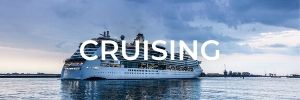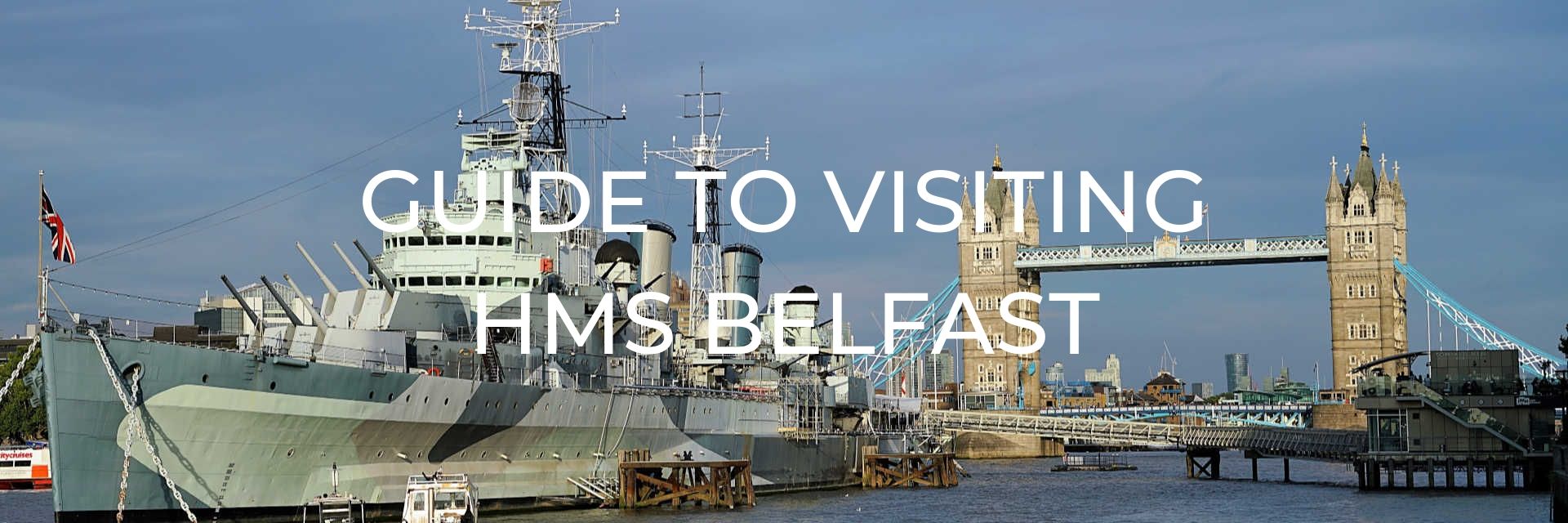
Launched in March 1938, HMS Belfast saw active duty during World War II, playing a part in destroying the German battlecruiser Scharnhorst at the Battle of North Cape and in the Normandy landings. It also served the Royal Navy in Korea and was used in peacekeeping duties in the 1950s and ’60s. It is now permanently docked in London near Tower Bridge and is operated by the Imperial War Museum.
Want to save this for later? Click the Pinterest button on the left for a pinnable image!
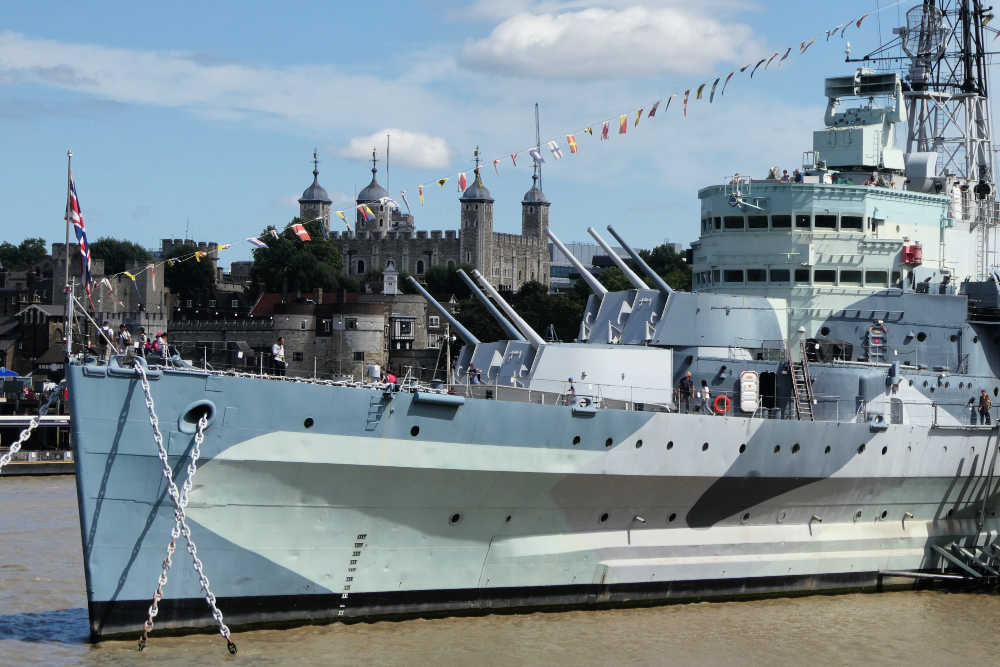
This post may contain affiliate links. Please read our full disclosure policy here.
HMS Belfast is a Town-class cruiser and was constructed between 1936 and 1938. Commissioned in August 1939, she entered active service just before the outbreak of World War II. She initially served as part of the naval blockade against Nazi Germany during which time she was badly damaged by a mine. The mine almost caused the ship to be scrapped, but after extensive repairs, she returned to active service in 1942.
For the rest of the war she saw service around the globe, from escorting Arctic convoys to becoming part of the Pacific fleet. Two notable events are HMS Belfast’s roles in the destruction of the German ship Scharnhorst during the Battle of Cape Cod and being part of the D-Day Landings in Normandy. HMS Belfast is one of only three remaining vessels of the allied bombardment fleet from D-Day, the others are the destroyer USS Laffey and the battleship USS Texas. During her support of the D-Day landings she fired over 5,000 shells.
After World War II, HMS Belfast saw active service in the Korean War and remained in service until 1963. A campaign to preserve the ship as a museum was successful and the ship opened to the public in 1971 and became part of the Imperial War Museum in 1978.
HIGHLIGHTS OF HMS BELFAST
The entrance to HMS Belfast is on the south side of the River Thames, between London Bridge and Tower Bridge. You can’t miss the ship, moored menacingly in the centre of London. The tour is self-guided and takes you through the ship at your own pace using the audio guide that is included in your admission price.
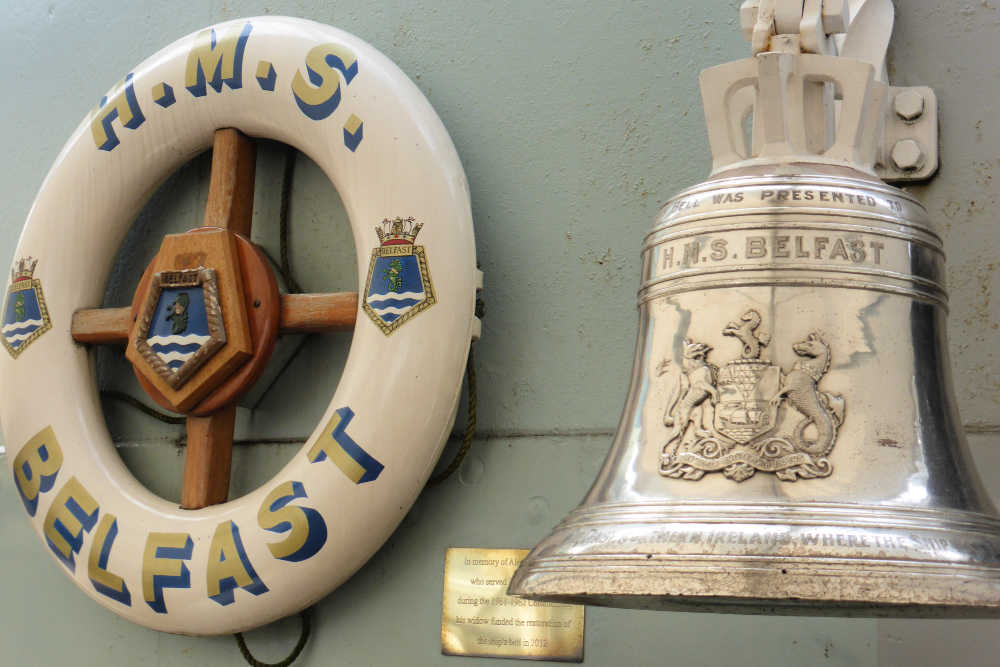
THE TOUR
The self-guided audio tour will take you through HMS Belfast in an orderly fashion. Being a formerly active warship, there are many routes and passageways, so following the audio guide is advised to ensure you see everything there is to see.
You’ll start the tour on the main deck of the ship at the stern with a great view of Tower Bridge to be had. You shouldn’t miss the gun turret experience before heading to see support areas of the ship such as the laundry and the morale-boosting mail room.
Heading below decks from here are the boiler and engine rooms before sickbay and the canteen as you progress towards the bow of the ship. Descending again you can visit the ‘B’ shell room where ammunition was stored before heading to the punishment cells right in the bow.
Admire the view up the Thames one deck up from the fo’c’sle as well as getting up close to some of those enormous gun turrets at the bow before heading to the bridge tower to see where the ship was run from. Finally, you’ll see the boat deck and smaller guns as you head to the stern where the tour finishes.
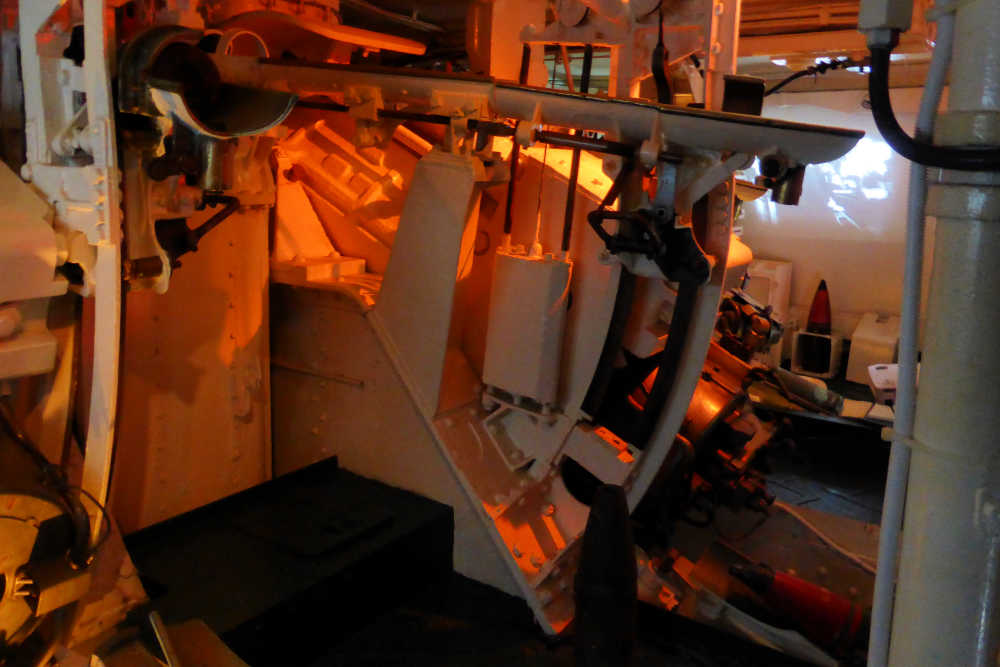
GUN TURRET EXPERIENCE
The 6-inch gun turret at the rear of HMS Belfast, known as ‘Y’ Turret, is an interactive experience that attempts to bring to life the experiences a young sailor would have experienced working as a gunner during a battle.
The battle in question is the Battle of North Cape, when HMS Belfast sighted the German ship Scharnhorst, and tells the young sailors story as HMS Belfast repels Scharnhorst and forces its retreat. HMS Belfast then shadowed the ship using radar allowing it to be intercepted and sunk by HMS Duke of York.
While unable to fully recreate the experience of being in a sea battle between two warships, the gun turret experience uses light, sound, smoke and movement to as closely as possible replicate the experience that a gunner would have had during battle.
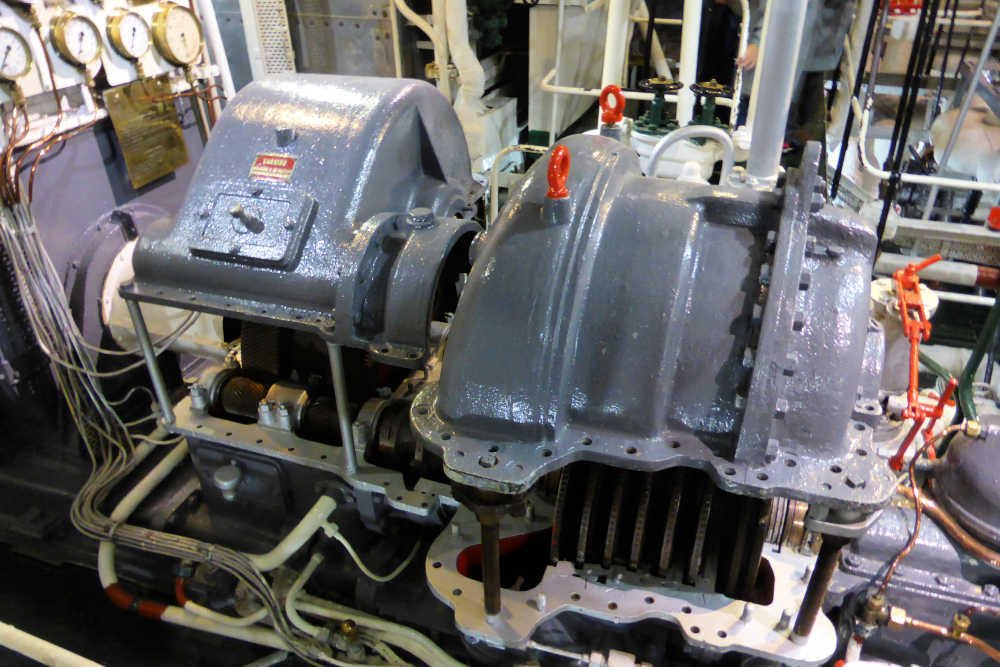
BOILER AND ENGINE ROOMS
The heart of any ship, HMS Belfast’s four boilers powered steam turbines which drove four propellers. This gave the ship a speed of 32.5 knots (60 km/h, 37.5 mph) and with almost 2,500 tonnes of fuel onboard, she could sail for over 8,500 nautical miles (16,000 km, 10,000 miles) at a reduced speed of 13 knots. You can only imagine how hot, smelly and sweaty it would have got down here when the ship was at full speed.
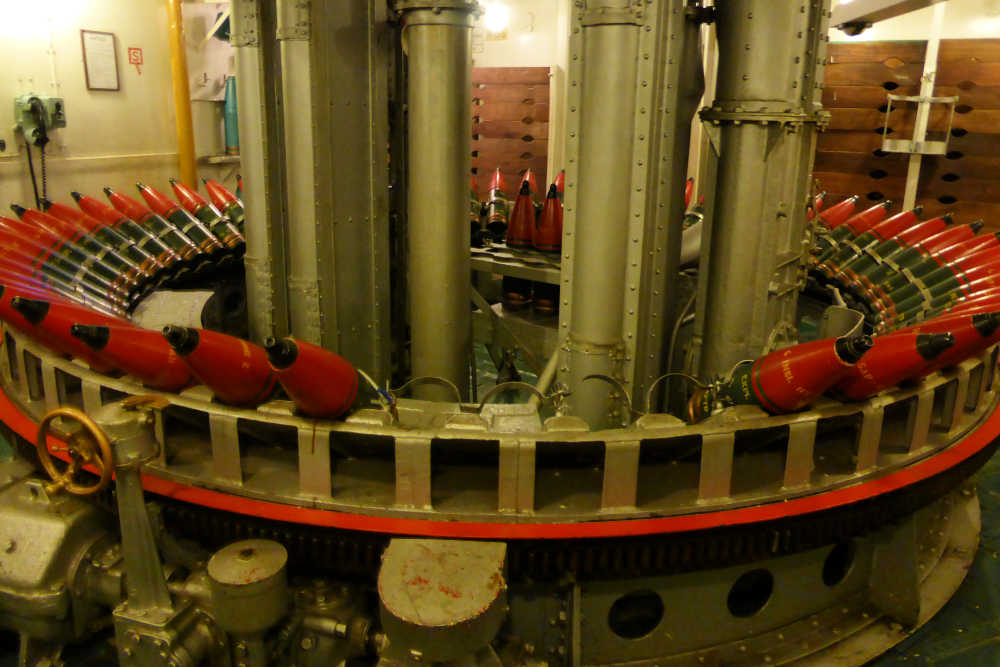
‘B’ SHELL ROOM AND HOIST
The ship’s ammunition stores are deep in the bowels of the ship to help protect them from enemy fire. The hoists from each shell room allowed the shells to be sent to the guns for firing as quickly as possible enabling the ship to keep its guns firing at their targets.
If the guns at the bow were fired today, the people taking a break from their journey at the London Gateway Service area at Scratchwood on the M1 would be in for a very unpleasant surprise, despite being 11.7 miles northwest of the ship!
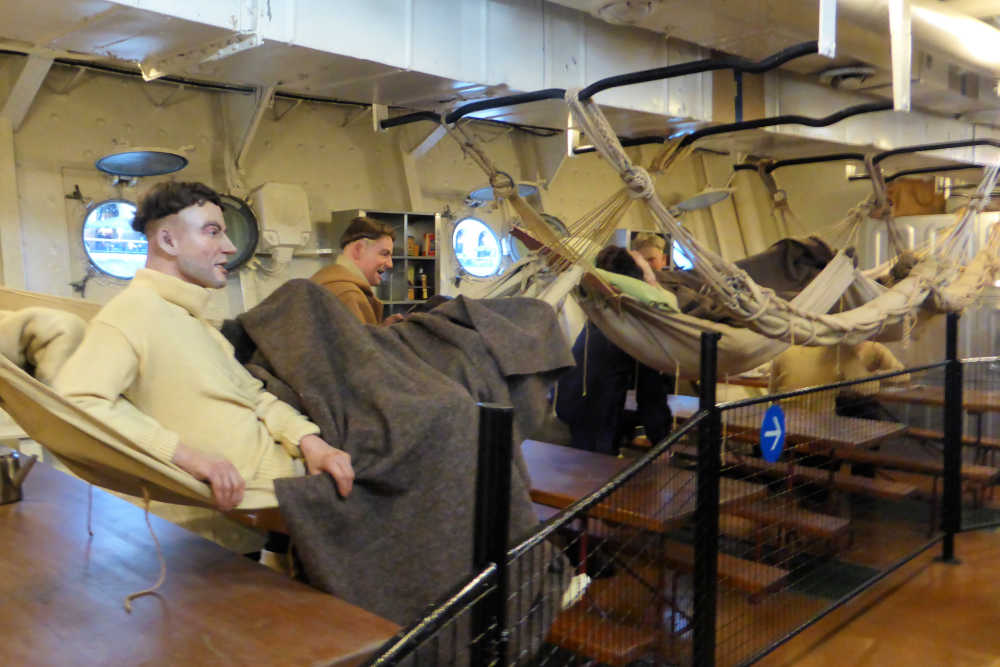
ARCTIC MESS DECKS
When HMS Belfast was escorting arctic convoys conditions on board were less than ideal. Terrible weather, freezing temperatures and endless days (or nights), depending on the time of year, made for an uncomfortable service. The sailors kept their spirits up as best they could, having a variety of competitions, playing games and even gambling illegally. Being called to battle stations for the Battle of North Cape may have come as a relief to some that they finally could do what they were at sea to do.
The Arctic Mess Deck show how the sailors were crammed into the ship for these arduous duties.
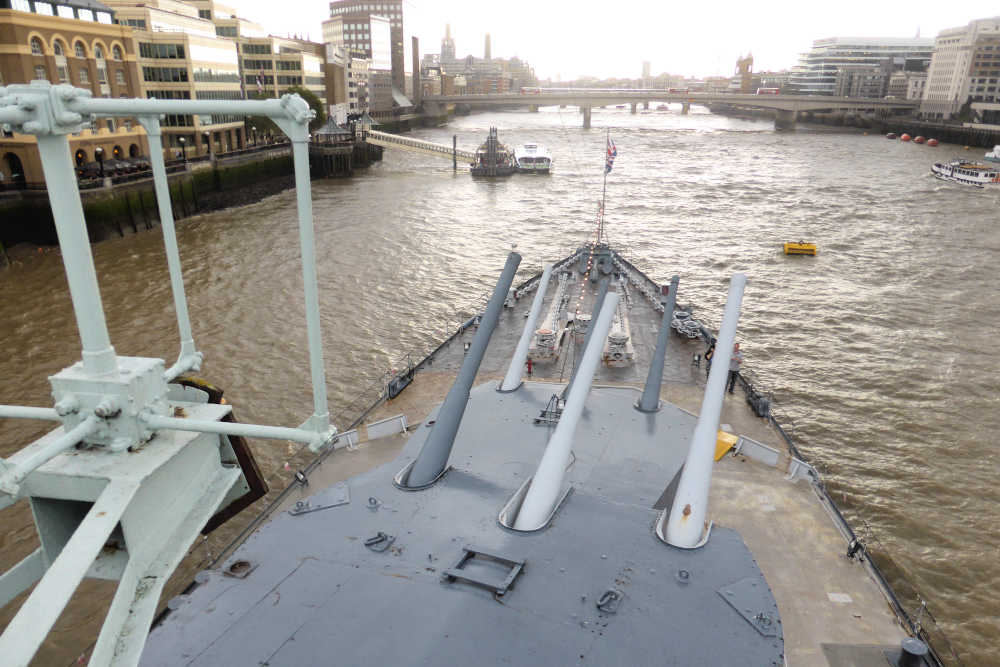
THE BRIDGE
The Bridge is the nerve centre of any ship, the primary location for the captain and his senior officers to oversee the ship and make decisions. The Bridge tower on HMS Belfast contains many of the decision making areas onboard including the operations rooms, wireless operator and gun direction platform. These all fed information to the captain so he could make the best decisions as to how to manoeuvre the ship; warning him of incoming threats and tracking enemy movements.
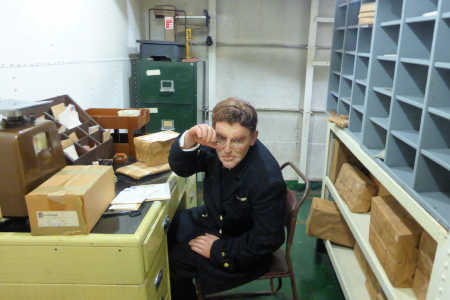
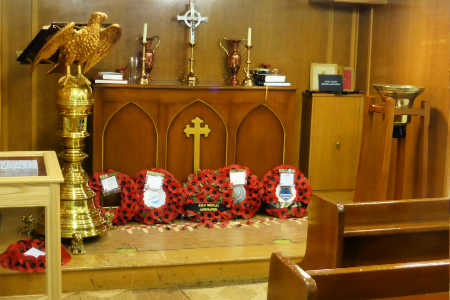
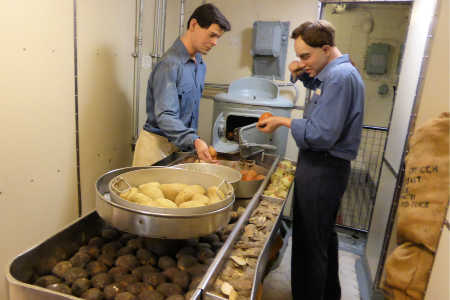
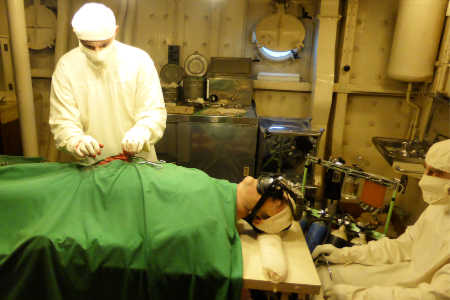
PLAN YOUR VISIT TO HMS BELFAST
Information last updated September 2019
HOW TO GET THERE
HMS Belfast can be found at The Queen’s Walk, London SE1 2JH.
This is between London Bridge and Tower Bridge on the south side of the river Thames. The entrance is towards the stern (rear) of the ship
The nearest tube station is London Bridge (Northern and Jubilee lines) and London Bridge is also on National Rail, the station is just seven-minutes walk.
Parking is available less than ten minutes walk away at NCP London Bridge.
HELPFUL LINKS:
- If you need an app that will navigate you around whether walking, driving or using public transport and even works offline then click for a guide about how to use Here WeGo.
- The Tube Map/London Underground App (Android and Apple) is very useful for getting around London. It's free, has a route planner, and works offline.
- Transport for London website's "Plan Your Journey" tool will give you results for trip time on the Tube, bus, or walking. Note the walking time as sometimes it is the quickest, easiest, option!
OPENING HOURS
Opening hours are 1000-1800 every day except for the 24th to 26th December. Last admission is one hour before closing.
As most of the attraction is indoors, any time of year is a good time to visit and it could be the perfect place to visit on a rainy or cold day. We would recommend you allow at least two hours to fully explore the ship.
HOW TO BUY TICKETS & SAVE MONEY ON ADMISSION
Basic admission prices are £18 for adults, £9 for children 5-15 years, £14.40 for over 60s, students and disabled visitors. One carer per disabled visitor can visit for free. You can save 10% by booking online in advance
HMS Belfast is included in the London Pass and London Explorer Pass which can offer savings depending on what else you are doing whilst you are in London. If you are travelling by train on National Rail you may also be eligible for great savings with the 2 for 1 London offer by Days Out Guide. This offer is not available all the time but it is well worth a quick look on their website to see if it’s available for when you’d like to visit.
ACCESSIBILITY
HMS Belfast was built as a warship, not a tourist attraction, so it contains many areas which are only accessible via ladders and steps, some of which are quite steep. However, the ship has been modified to provide as much access as possible to wheelchair users allowing them to visit both main decks. The ship is quite cramped and you should be careful when moving around, especially when moving between decks.
For full accessibility details please visit the HMS Belfast Accessibility page.
IS HMS BELFAST WORTH THE VISIT?
As one of only three remaining D-Day warships, HMS Belfast holds a special place in history. Visiting the ship and learning about notable events its history as well as how life was onboard during its active service, we found our visit to HMS Belfast to well worth it. To see how the ship operated and explore so much of the vessel was both interesting and informative.
See what others think of this attraction on Trip Advisor.
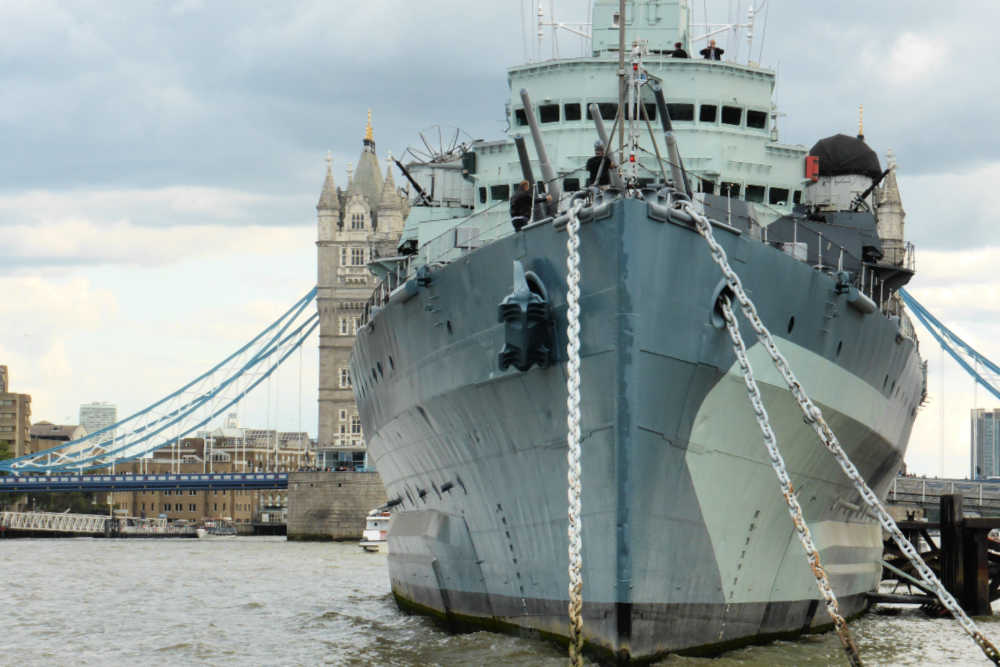
ADD TO YOUR ITINERARY
“When a man is tired of London, he is tired of life” said Samuel Johnson, so it’s no surprise that there are a plethora of things to do in the UK’s capital city. Here are a few choice selections to whet your appetite.
IN THE AREA
- Nearby Tower Bridge offers wonderful views of the city, including straight down to the road and river below through the glass floor!
- Step further back in time to the 11th century and visit the Tower of London to see the Crown Jewels, the White Tower, and take a tour by one of the Yeoman Warders.
- The Shard is the tallest building in the UK, get a birds-eye view of London from its 243m (800 ft) high viewing platform.
- If you don’t want to quite that high, then The Monument, which was built to commemorate the Great Fire of London, offers great views of HMS Belfast and Tower Bridge.
- Take a trip back to what prisons were like centuries ago with a tour of The Clink Prison Museum, built on the original site of the prison which dated back to 1144.
RELATED ATTRACTIONS IN AND AROUND LONDON
- Continue learning about World War II history, as well as other conflicts through history, at the Imperial War Museum.
- Explore the Churchill War Rooms, the actual rooms where Churchill and his chiefs of staff formulated strategy for the defence of the UK during World War II.
- Step aboard the worlds only surviving extreme clipper, the Cutty Sark. Over 150 years old, it was one of the fastest ships of its day.
- To learn more about the Britains seafaring history, visit the National Maritime Museum, the largest in the world, in nearby Greenwich.
- North of London you can find IWM Duxford, a branch of the Imperial War Museum which houses nearly 200 aircraft including warplanes and a development Concorde.
Want to save this for later? Click the Pinterest button on the left for a pinnable image!
RESOURCES | PLAN YOUR TRIP TO LONDON
To book flights, rental cars, accommodations, and activities for your trip, please check out our recommended travel providers, favourite apps and websites.
These are a few tours that relate to HMS Belfast that we would recommend for your trip to London.
Some of the links in the post above are affiliate links. This means if you click on the link and purchase the item, we will receive an affiliate commission but this does not affect the price to you. Please read our full disclosure policy here.


